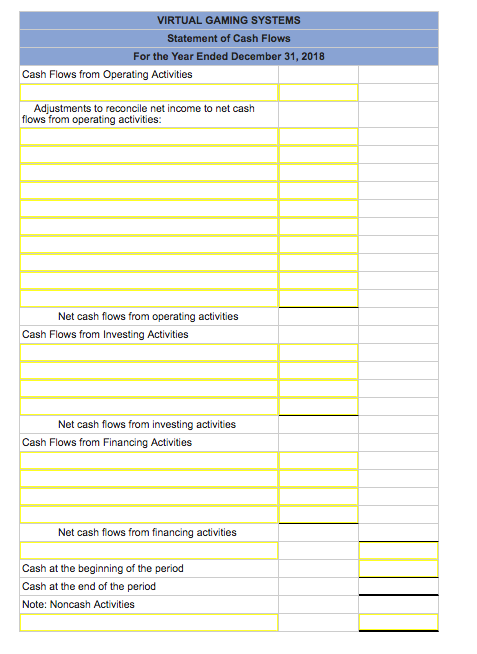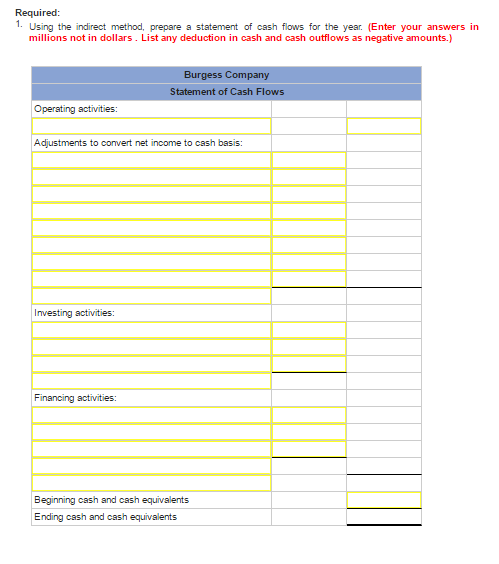

Okay, so this is when we're buying equipment or selling equipment for cash. So the investing section relates to the purchase and sale of long term assets. This is the first section, arguably the most important section, because that's our core business. So our operating activities is generally dealing with that relationship between net income and operating cash flows. While these, these are the things that we deal with in our day to day operations. Excuse me, like accounts receivable inventory, right? Prepaid expenses, things that we use in our day, day to day operations or accounts payable and accrued expenses, right? These types of operating assets and liabilities. When we think about operating current assets and liabilities, that's things like current assets. Right? And we're talking about specifically operating current assets and liabilities, right. When you think about our operations, were generally dealing with our current assets and current liabilities on our day to day basis. Okay, so when we talk about operating activities, we're gonna be focused on current assets and liabilities. But in general we want to be seeing positive operating cash flows or it's just not gonna work. Maybe we'll have a period where we don't have operating cash flows. So we must be generating positive cash flows to be a successful business. And if we can't generate positive cash flows, well, that's a red flag that we might go bankrupt in the future. Right? We're in business to do this core business of ours. So like I said, it represents the core business and it's obvious that a successful business should be generating cash flows from operations. Right? So we want to see this net income and the relationship it has the cash flow that comes from these operating activities. So this these operating activities, they create revenues, expenses, the gains and losses, right? They deal with net income that comes from the income statement. We want to see the cash flows that are generated through operations. This is where we deal with operations, right? The core business of the company. So, the first section is the operating activities operating activities. We're gonna see three sections that we're going to become very familiar with throughout this chapter. It's going to be organized into three main sections.

Now, let's start discussing a little more details about the statement of cash flows itself.

Okay, so that's the main reason why the statement of cash flow is important. Maybe we have huge income, but not much cash flow coming in. Well, we want to make comparisons of that net income and cash flow. We'll have an account receivable for the future. Sometimes we'll have a revenue that we don't receive the cash for it yet. Remember that net income by itself is not a cash amount, right? Net income deals with revenues and expenses that are not always cash based. And it, lastly, it gives us a little more information between the relationship of net income and cash flow. So, the statement of cash flows is a good place to get information about that. Well, we need cash to do those transactions. It determines the company's ability to pay right when we have to pay interest or pay dividends. It helps us evaluate management, right? Because we can evaluate how management uh uses cash flows, the cash that it brings into the business and how it uses it in the business. How how's the company doing now? Well, that gives us the predictive value of what it's going to be doing in the future. It gives predictive value of future cash flows based on the past cash flows. So a lot of investors focused on cash flows and the statement of cash flows is a great place for that information. From a financial perspective from finance perspective, they are definitely focused on cash flows.

A lot of investors are interested in the cash flows of the company. Okay, so why do we use the statement of cash flows? Well, first, it has predictive values. A lot of things happen in the cash account and we want to summarize them here with the cash flow statement. What got us from the beginning cash to the ending cash. Right? So the statement of cash flows focuses on these additions and subtractions. The statement of cash flows, it helps us get from our beginning cash balance to our ending cash balance right? We start we begin with some cash balance and then we're gonna have all sorts of additions to cash and subtractions to cash throughout the period that gets us to the ending cash balance. Right? And that's where we deal with dividends here. Remember we have our four main financial statements, we've dealt a lot with the balance sheet and the income statement, the statement of retained earnings or the statement of stockholders equity tells us the changes in stockholders equity or retained earnings. This is one of the tougher units in the course. Alright now we're going to discuss the statement of cash flows.


 0 kommentar(er)
0 kommentar(er)
